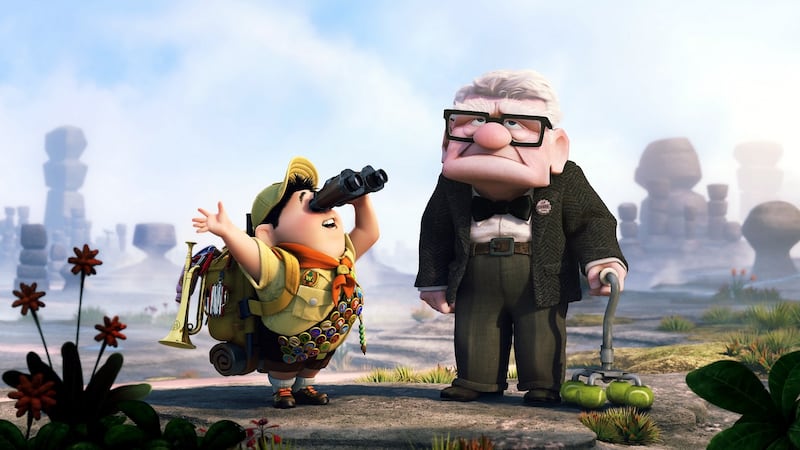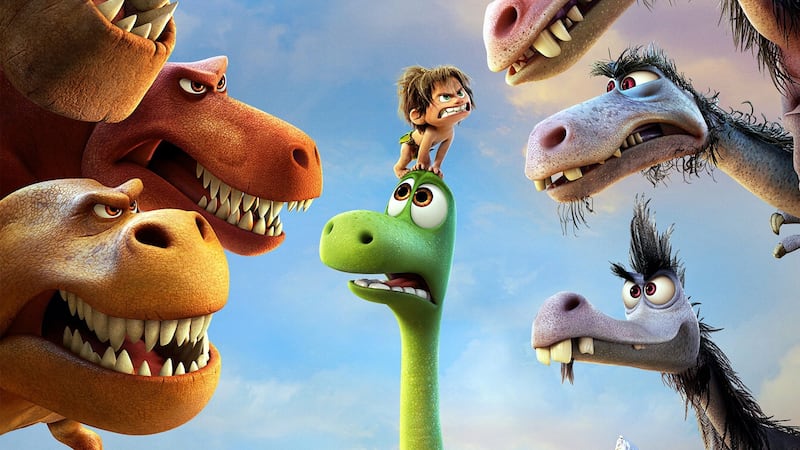Jim Morris, president of Pixar, is in Dublin for the Irish Visual Effects & Animation Summit and for the launch of The Good Dinosaur, the studio's Christmas release. I need to broach a sensitive issue.
The public feel protective about Pixar Animation. The company was actually formed way back in 1974 as a cadre within Lucasfilm, but didn’t register with general audiences for another 20 years.
The release of Toy Story in 1995 ranks alongside the arrival of sound and the invention of colour as a key innovation in the industry.


Like the moon landing, the first computer-generated feature happened a little sooner than the technology seemed to allow.
More surprising still, it was absolutely super. Pixar has now raised a generation of children. It is – alongside corporate partners Walt Disney – one of the very few film companies whose work has a clear (and likable) identity. Who would say a bad word against them?
Whisper it. In the past few years, after an uninterrupted run of critical smashes, Pixar looked to have sunk into something of a slump.
Brave got so-so reviews. Monsters University received shrugs. Cars 2 – sequel to the marginally more lovely original – got genuine stinkers from the critics.
It is for this reason that Inside Out, a lovely epic set inside a young girl's head, was celebrated as a "return to form" earlier in the year. Pixar fans weren't just happy there was a good film in cinemas. It was a little as if an ill friend had made a remarkable recovery.
Does Morris buy this? Was there a crisis?
"What people aren't aware of is that we were making Inside Out as we were making all those other films," he says. "So the notion of a 'return to form' is hard for us to credit. Some people like some films more than others. Cars 2 was a high concept film that was not as deeply emotional. Brave had a Princess feel to it, which maybe felt more like Disney. Monsters University is a great film, but it's a franchise. In the gestalt of that group preceding Inside Out there was nothing that felt like a new chapter in the story. I can appreciate why people would have that feeling."
Does that sound like an admission? I can’t say for certain.
"We try to do our best with them. There are people who tell me Cars 2 is their favourite film."
Okay then.
Morris, who looks like a smoother John Banville, has had a busy career. A graduate of Syracuse University, he began as a producer of visual effects and eventually found himself working for George Lucas's Industrial Light and Magic. He joined Pixar Animation in 2005 and worked as producer on such films as WALL-E, Ratatouille and Up.
So, how is the relationship with Disney? When they first got in bed together, the companies’ animation wings did very different things. Now, they both spend a lot of their time producing similar-looking computer-generated pictures.
“I would say the companies feel very different,” he says. “They are still in the classic Disney tradition: fairy-tale backgrounds. It’s a different creative feel.”
So, are they competitive? When, in 2013, Disney's Frozen made half a billion dollars more than Pixar's Monsters University was there scowling in the canteen?
“I feel there is great congeniality,” he says. “Each will take a film to the other and use their brains’ trust as a sounding board. I know it sounds weird, but we have a pretty good relationship.”
The word on The Good Dinosaur – which sees a dinosaur take a boy as a pet – has been positive so far. But it seems there have been all kinds of complications at Pixar over the last few years. The film was supposed to have emerged in 2014. Its delay meant that, for the first time since 2005, there was no Pixar release last year.
“We had a story idea we all liked and we hit story problems we couldn’t solve with those brain trusts,” he says. “It was a group effort. We liked some of the core feeling.
“So we just started over: fresh producer, fresh director, entire crew. Some of the moments survived. But it feels like a fresh project.”
So how difficult is it to turn around a tanker of those dimensions? Each film is an industry on to itself.
“All the films go through crises. Some are just bigger than others,” he says. “Not that it’s easy to turn a film around. It’s not trivial. It’s traumatic to be honest. You have a crew cooking and suddenly you pull a rug from under them.”
Morris remembers conversations with a key figure from Pixar’s early days (currently back in the news again).
“It’s like Steve Jobs said to me: when you make a film you are either going to put a deposit or make a withdrawal in how the world sees you. It’s not worth it to make a withdrawal. If you get an opportunity to fix it or improve it then grab it.”
Next year, Pixar finally launches a sequel to Finding Nemo called Finding Dory. Then (oh you never know) they return to the Cars franchise.
In autumn of 2017, they will release an original film called Coco. Then it's Toy Story 4. Hmm? I see a lot of sequels here.
"We weren't expecting to do a sequel to Finding Nemo. We only do a sequel when the original director is on board and Andrew Stanton had an idea."
Then of course there are all the nascent projects that he can’t discuss.
“Oh I can’t tell you about those,” he laughs.
We wait with undiminished expectation.













